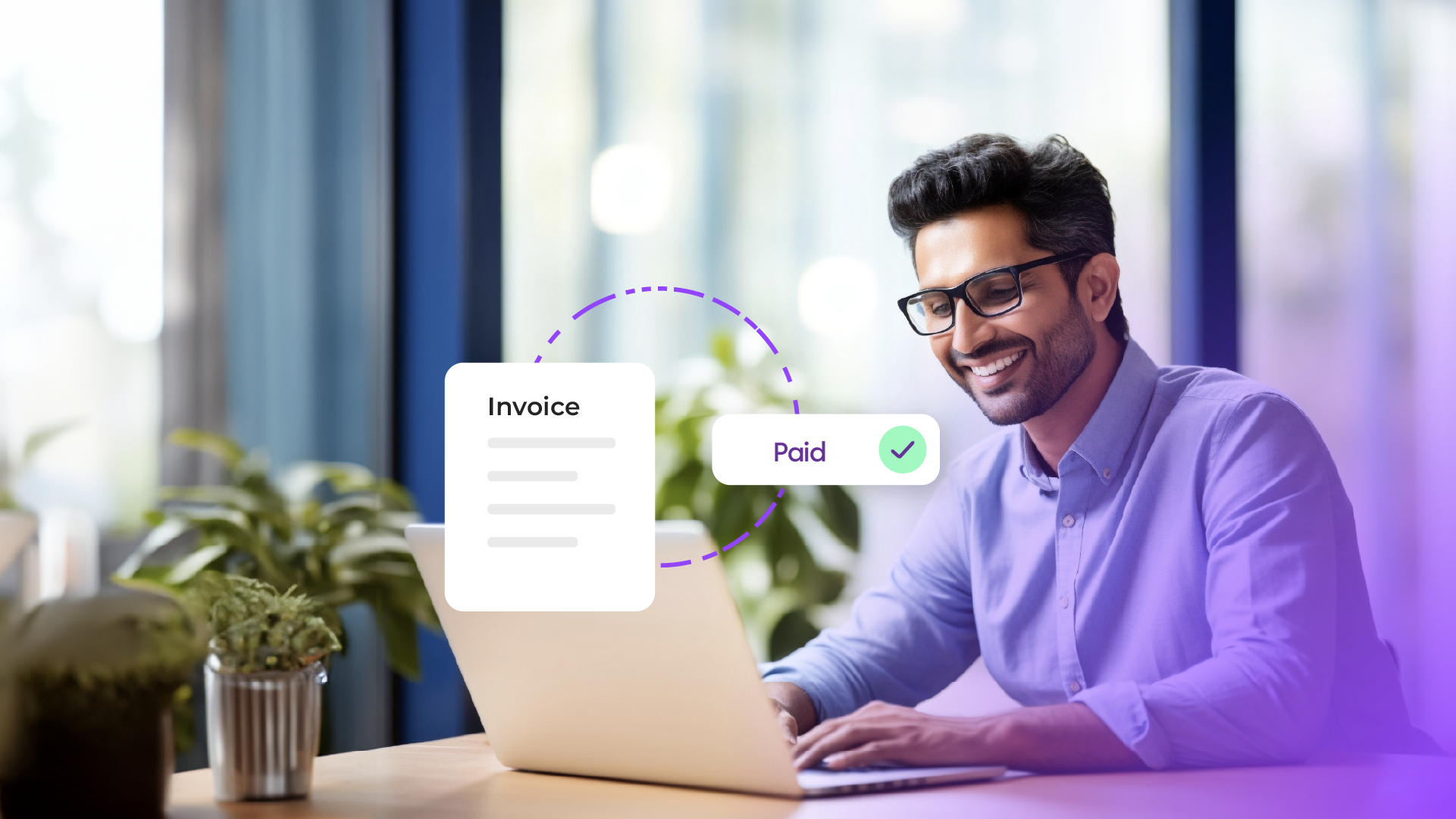In recent years, Accounts Payable (AP) has evolved significantly due to technology, regulations, and changing business demands. Once seen as a back-office task focused on invoices and payments, Accounts Payable now holds a strategic position. It’s vital for managing working capital, optimizing cash flow, and maintaining vendor relationships. However, digital transactions bring new challenges, like managing multiple currencies, diverse regulations, and managing a growing number of invoices from various sources. Approximately 22% of the time in Accounts Payable departments is dedicated to managing supplier inquiries, diverting attention from more crucial responsibilities.
Given these evolving requirements, there’s an urgent need for Accounts Payable automation. Manual, paper-based methods are error-prone, time-consuming, and lack the flexibility needed for modern business demands. Automation technologies like RPA, machine learning, and AI offer significant opportunities to streamline Accounts Payable operations, boost efficiency, and cut costs. By automating tasks such as data entry, invoice processing, and payment reconciliation, organizations save time and resources for critical activities. Automation also improves compliance, provides real-time visibility into Accounts Payable workflows, and enhances internal controls, reducing risks of fraud and errors.
Three-way Invoice Matching Automation
Three-way invoice matching is a process used by businesses to ensure that the amounts stated on an invoice match the corresponding purchase order and receipt of goods or services. In simple terms, it involves comparing three important documents: the invoice from the supplier, the purchase order issued by the buyer, and the receipt of goods or services. The aim is to ensure that the items ordered, received, and invoiced match accurately. This helps businesses avoid overpaying for goods or services, detect billing errors, and maintain accurate records of their transactions.
For instance, consider a businessman named XYZ who runs a textile business. He relied on conventional approaches to match invoices, a process that proved to be expensive and time-consuming. Here are a few hurdles he encountered:
- Time-consuming: Manual invoice matching requires considerable time and effort as each invoice needs to be compared with its related purchase order and receipt.
- Prone to errors: Human errors are common in manual processes, leading to mistakes and inaccuracies in matching invoices with purchase orders and receipts.
- Lack of scalability: As the volume of invoices increases, matching invoices manually becomes less practical and resource-intensive.
- Difficulty in handling exceptions: Manual processes struggle to efficiently handle discrepancies or exceptions, leading to delays and disruptions in the invoice processing workflow.
- Limited visibility: Manual matching may lack real-time visibility into the status of invoices, making it difficult to track progress and identify bottlenecks in the process.
- Compliance risks: Manual processes increase the likelihood of non-compliance with internal controls and regulatory requirements, potentially exposing the organization to financial and legal risks.
According to research, almost 7.5% of all documents get lost and another 3% are misfiled. These statistics demonstrate one of the clearest issues with physical documents: the inefficiencies they present.
Given these difficulties, he was advised to automate the entire invoicing process. Now, let’s explore some advantages of automated invoice processing.
Benefits of Automating Three-way Invoice Matching:
- Increased accuracy and reduced errors: Automating three-way invoice matching improves accuracy by reducing the chances of human errors. Using technologies like machine learning and artificial intelligence ensures precise matching of invoices with purchase orders and receipts, reducing mistakes and ensuring correct processing. This minimizes costly mistakes such as overpayments and helps maintain financial record integrity.
- Faster processing times: Automation speeds up the entire invoice-matching process, surpassing manual methods. The software can quickly compare numerous invoices with purchase orders and receipts, minimizing the time needed to resolve errors and authorize payments. This faster processing allows organizations to shorten payment cycles and enhance cash flow. Moreover, it boosts operational efficiency and grants AP staff more time for valuable tasks.
- Improved vendor relationships: Automating three-way invoice matching enhances vendor relationships through timely and precise payments. By processing invoices efficiently and minimizing payment delays, organizations build trust with suppliers, potentially leading to better terms and services. Automated systems also offer vendors real-time visibility into invoice statuses, improving transparency and communication.
Automated Purchase Order Generation and Approval:
Purchase orders are crucial for any business’s procurement strategy. They’re official documents detailing what a company wants to purchase from a supplier. This document serves as a legally binding contract between the buyer and the seller, specifying quantities, prices, delivery dates, and terms of payment. They’re essential for keeping the buying process smooth, clear, and organized. Plus, they help companies manage their stock and finances better by keeping accurate records of purchases.
Manual purchase order management is often associated with several limitations and challenges. Firstly, it is time-consuming and prone to errors, as it involves the manual entry of data, which can lead to inaccuracies and mistakes in orders. Additionally, manual processes lack visibility and tracking capability, making it difficult to track the status of orders or identify bottlenecks in the procurement workflow. Furthermore, manual approval processes can lead to delays in order processing, which can affect the overall effectiveness of the procurement workflow.
Automating purchase order generation and approval offers numerous benefits to organizations:
- Streamlined procurement processes: By removing manual tasks like data entry and approval routing automating purchase order generation and approval simplifies the procurement process. This reduces processing times and errors, enabling faster procurement of goods and services, and enhancing overall operational efficiency.
- Enhanced budget control and compliance: Automation integrates with financial systems and rules to ensure purchase orders stay within budget limits and comply with regulations. This prevents unauthorized spending and aligns purchases with budget and regulatory requirements, helping organizations maintain financial discipline and avoid costly violations.
- Improved visibility and transparency: Automated systems offer real-time visibility into purchase order statuses throughout procurement. Stakeholders can track orders, monitor approvals, and spot delays, promoting better communication with departments and vendors. This transparency reduces misunderstandings, while detailed audit trails ensure accountability and support post-procurement analysis for continuous process improvement.
Automating purchase order systems streamlines procurement. They use software to handle tasks like creating orders, getting approvals, and talking to vendors. This reduces time spent and minimizes errors typical of manual approaches. By utilizing such systems, companies operate more efficiently, reduce errors, and exercise better control over their purchases, leading to cost savings and increased productivity.
By employing software solutions to manage payments to vendors, automating vendor payment processing simplifies the payment procedure for businesses. This reduces manual tasks, minimizes errors, and enhances efficiency in the accounts payable department. It involves setting up systems that can automatically generate and send payments based on predefined criteria, such as invoice approval and payment terms. By implementing automated vendor payment processing, businesses can save time, improve cash flow management, and strengthen vendor relationships through timely payments.
Maintaining timely and accurate vendor payments is important for maintaining positive relationships with suppliers and ensuring smooth business operations. When vendors are paid punctually and accurately, it cultivates trust and reliability, encouraging them to continue providing goods and services to the organization. It can also help negotiate better terms and discounts with suppliers, ultimately saving costs for the business.
There are several challenges that comes with manual vendor payment processing, including errors in data entry, delays in payment processing, and difficulties in tracking payment statuses. Human errors like entering wrong invoice numbers or incorrect payment amounts can result in payment disputes and strained relationships with vendors. Moreover, manual processes are time-consuming and labor-intensive, requiring significant effort to manage paperwork and maintain records. These inefficiencies can result in missed payment deadlines, late fees, and potential damage to the organization’s reputation.
The right solution is to automate these processes to eliminate all the inefficiencies. Below are a few benefits of automating vendor payments:
- Reduced Payment Errors and Delays: Automation can significantly reduce errors and delays commonly associated with manual methods. By eliminating human input errors and optimizing processes, businesses can ensure accuracy and timeliness in payments, avoiding disputes and maintaining smoother operations.
- Improved Vendor Satisfaction & Relationships: When vendors receive timely payments without errors, it cultivates trust and reliability, enabling the overall relationship between the business and its suppliers. This, in turn, can lead to better terms, discounts, and a more collaborative partnership.
- Optimized Cashflow Management: By streamlining payment workflows and ensuring timely settlements, organizations can better predict and control their cash flow, minimizing the risk of liquidity issues and capitalizing on available funds for strategic investments or operational needs.
AP Analytics and Reporting Automation:
Analytics and reporting are essential in Accounts Payable (AP), offering valuable insights into financial performance, expenditure trends, and vendor management. These help businesses make informed decisions, identify cost-saving opportunities, and optimize their Accounts Payable processes for efficiency.
Manual AP analytics and reporting have several drawbacks time-consuming data collection, lack of real-time insights, and being prone to errors. Without automation, it’s harder to analyze large data volumes efficiently, which can result in delayed decisions and possibly inaccurate financial reports.
Benefits of Automating Accounts Payable analytics and reporting:
- Real-time visibility into Accounts Payable performance allows businesses to monitor their financial health and track key metrics instantly, enabling decision-making and timely interventions.
- Identification of process bottlenecks and improvement opportunities becomes more efficient with automated analytics, as businesses can analyze data quickly to identify areas for optimization, streamlining Accounts Payable workflows and enhancing overall efficiency.
- Enhanced decision-making and strategic planning are facilitated by automated Accounts Payable analytics, providing accurate insights into financial trends and patterns. This enables organizations to make informed decisions, allocate resources effectively, and devise strategic plans for future growth and sustainability.
The implementation of AP automation contains various steps:
- Assessing current Accounts Payable processes and identifying automation opportunities: Businesses evaluate existing Accounts Payable workflows to pinpoint manual tasks and inefficiencies that can be automated for improved efficiency and accuracy.
- Selecting the right Accounts Payable automation solutions: Companies research and choose suitable Accounts Payable automation software or platforms that align with their specific needs, considering factors such as features, scalability, and integration capabilities.
- Change management and user adoption strategies: Successful implementation requires effective change management strategies to ensure a smooth transition and user acceptance. Training programs and communication plans are essential for driving adoption among employees.
- Measuring the success and ROI of Accounts Payable automation: Businesses track key performance metrics such as processing time, error rates, and cost savings to assess the effectiveness of Accounts Payable automation. Calculating ROI helps justify investment and identify areas for further improvement.
Future developments in Accounts Payable Automation are set to revolutionize how businesses handle their financial operations. Here are some future trends in Accounts Payable automation:
- Artificial Intelligence and Machine Learning in Accounts Payable: AI & ML technologies will revolutionize Accounts Payable processes by automating data extraction, invoice categorization, and fraud detection, enhancing accuracy and efficiency.
- Blockchain technology for secure and transparent transactions: This will enable secure and transparent AP transactions, reducing fraud risks and ensuring trust among stakeholders by maintaining unchangeable transaction records.
- Integration of Accounts Payable automation with other financial systems: Accounts Payable automation will integrate easily with ERP, CRM, and other financial systems, enabling streamlined data exchange and providing a complete view of financial operations.
Accounts Payable professionals will transition from manual data entry tasks to focusing on strategic activities such as vendor management, process optimization, and leveraging data analytics for decision-making, driving value creation for the organization.
Automation of Accounts Payable offers numerous benefits, including improved efficiency, reduced errors, enhanced visibility, and better decision-making, ultimately leading to cost savings and increased competitiveness. Embracing AP automation is essential for businesses to stay competitive nowadays. It helps streamline processes, adapt to market changes faster, and focus on strategic plans for growth and innovation.
OPEN empowers finance teams by automating and integrating various finance processes across departments, including inventory management and procurement. With OPEN, you’ll enjoy a fully automated, error-free, and efficient AP system that both your staff and vendors will appreciate.
Visit Open.money for more information.
Check out our latest e-book on AP automation: https://register.open.money/automate-accounts-payable-ebook/





